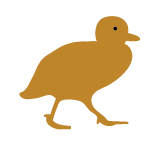'The era of global warming has ended. The era of global boiling has arrived.' So announced United Nations Secretary general Antonia Guterres in 2023. This course considers how artists and designers, with a particular focus on Australian and Australian First Nations artists including practitioners here at the ANU, have responded to the ongoing ecological destruction of the planet. It will consider the art historical context for the emergence of the environmental art and design movement as well as giving an insight into contemporary developments in this vital area of research and practice.
Learning Outcomes
Upon successful completion, students will have the knowledge and skills to:
- demonstrate an understanding of the historical, social and political contexts that have led to the development of contemporary responses to environmental catastrophe in art and design;
- verbally articulate and present with confidence a critical argument concerning art and/or design in relation to the environmental challenges that we are currently experiencing;
- adopt an interdisciplinary investigation of the interconnections between our own experiences, art and design and the global situation regarding the environment; and
- work collaboratively to investigate a problem.
Indicative Assessment
- Catalogue essay accompanied by a list of 12 design/ artworks (2,000 words) (40) [LO 1,3]
- Critical visual analysis of 4 key art and/ or design works (1,000 words) (20) [LO 1,3]
- Presentations (10 minutes per person) working in groups investigating interdisciplinary character of environmental art/design (30) [LO 1,2,3,4]
- In-class quiz (10) [LO 1]
The ANU uses Turnitin to enhance student citation and referencing techniques, and to assess assignment submissions as a component of the University's approach to managing Academic Integrity. While the use of Turnitin is not mandatory, the ANU highly recommends Turnitin is used by both teaching staff and students. For additional information regarding Turnitin please visit the ANU Online website.
Workload
130 hours of total student learning time made up from:
a) 36 hours of contact over 12 weeks: 24 hours of lectures and 12 hours of tutorials; and
b) 94 hours of independent student research, reading and writing.
Requisite and Incompatibility
Prescribed Texts
Refer to Wattle
Preliminary Reading
Refer to Wattle
Assumed Knowledge
N/A
Fees
Tuition fees are for the academic year indicated at the top of the page.
Commonwealth Support (CSP) Students
If you have been offered a Commonwealth supported place, your fees are set by the Australian Government for each course. At ANU 1 EFTSL is 48 units (normally 8 x 6-unit courses). More information about your student contribution amount for each course at Fees.
- Student Contribution Band:
- 14
- Unit value:
- 6 units
If you are a domestic graduate coursework student with a Domestic Tuition Fee (DTF) place or international student you will be required to pay course tuition fees (see below). Course tuition fees are indexed annually. Further information for domestic and international students about tuition and other fees can be found at Fees.
Where there is a unit range displayed for this course, not all unit options below may be available.
| Units | EFTSL |
|---|---|
| 6.00 | 0.12500 |
Course fees
- Domestic fee paying students
| Year | Fee |
|---|---|
| 2025 | $4320 |
- International fee paying students
| Year | Fee |
|---|---|
| 2025 | $5580 |
Offerings, Dates and Class Summary Links
ANU utilises MyTimetable to enable students to view the timetable for their enrolled courses, browse, then self-allocate to small teaching activities / tutorials so they can better plan their time. Find out more on the Timetable webpage.
Class summaries, if available, can be accessed by clicking on the View link for the relevant class number.
Second Semester
| Class number | Class start date | Last day to enrol | Census date | Class end date | Mode Of Delivery | Class Summary |
|---|---|---|---|---|---|---|
| 9080 | 27 Jul 2026 | 03 Aug 2026 | 31 Aug 2026 | 30 Oct 2026 | In Person | N/A |


